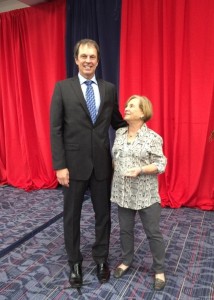Happy 169th Birthday Thomas Edison!
This past week marks Thomas Edison's 169th birthday! Thomas Edison invented the phonograph, in 1877 today he would of been celebrating his 169th birthday!
This past week marks Thomas Edison's 169th birthday! Thomas Edison invented the phonograph, in 1877 today he would of been celebrating his 169th birthday!
Celebrate Jewish Culture with FAU Libraries by attending the 8th annual Kultur Festival Celebration, a week of events celebrating Jewish Culture.
![]() If there’s one type of song that we will never grow tired of, it is the ever popular love song. Mellow or upbeat, mushy or filled with angst; whatever the tempo or the lyrical content…Enjoy these nine timeless love songs from the 1920s found in the Recorded Sound Archives Vintage, Judaic and Jazz collections just in time for Valentines day.
If there’s one type of song that we will never grow tired of, it is the ever popular love song. Mellow or upbeat, mushy or filled with angst; whatever the tempo or the lyrical content…Enjoy these nine timeless love songs from the 1920s found in the Recorded Sound Archives Vintage, Judaic and Jazz collections just in time for Valentines day.
Some songs may only be available as snippets due to US Copyright laws.
Looking for something to do on campus? Check out these music events taking place at FAU’s University Theatre in October. For other FAU Events, click here.
FAU Faculty & Friends
Saturday, Oct. 17, 7pm, University Theatre

FAU President Dr.John Kelly presented Maxine Schackman with this prestigious award on April 22, 2015.
Maxine was nominated for the prestigious Jeffrey Gabor Exemplary Employee Award by Rita Pellen, Interim Dean of FAU Libraries. In her nomination letter Pellen praised Schackman for her hard work building up the Judaica Sound Archives since the early 2000’s.
Panorama Theme by ![]() Themocracy
Themocracy